African Wild Dog: The Painted Predator of the African Wilderness
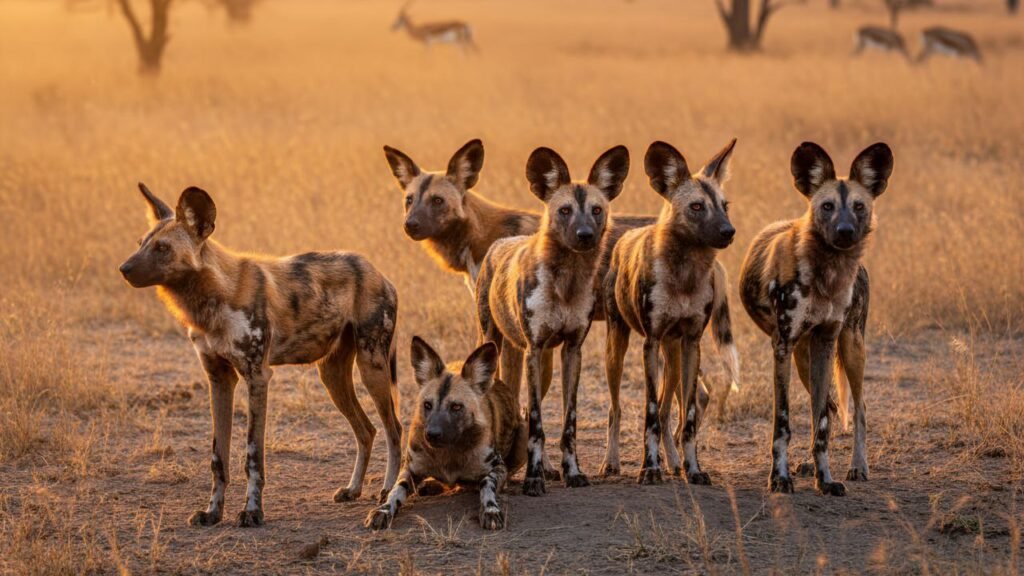
The African wild dog (Lycaon pictus), also known as the painted wolf or Cape hunting dog, is one of Africa’s most endangered and fascinating carnivores. With its unique coat patterns, complex social structure, and exceptional hunting skills, the African wild dog stands out as a key species in the ecosystems of sub-Saharan Africa. Despite its ecological importance, it remains under serious threat from habitat fragmentation, human-wildlife conflict, and disease.
Taxonomy and Evolution
- Scientific Name: Lycaon pictus
- Family: Canidae
- Order: Carnivora
- Status: Endangered (IUCN Red List)
Unlike domestic dogs (Canis familiaris), wolves (Canis lupus), and jackals, the African wild dog belongs to a unique genus (Lycaon), meaning “wolf-like.” It has evolved separately, displaying several differences in dental structure and limb morphology that reflect its highly specialized hunting lifestyle.
Physical Description
African wild dogs are medium-sized canids, weighing between 18–36 kg (40–80 lbs) and standing about 60–75 cm (24–30 in) at the shoulder.
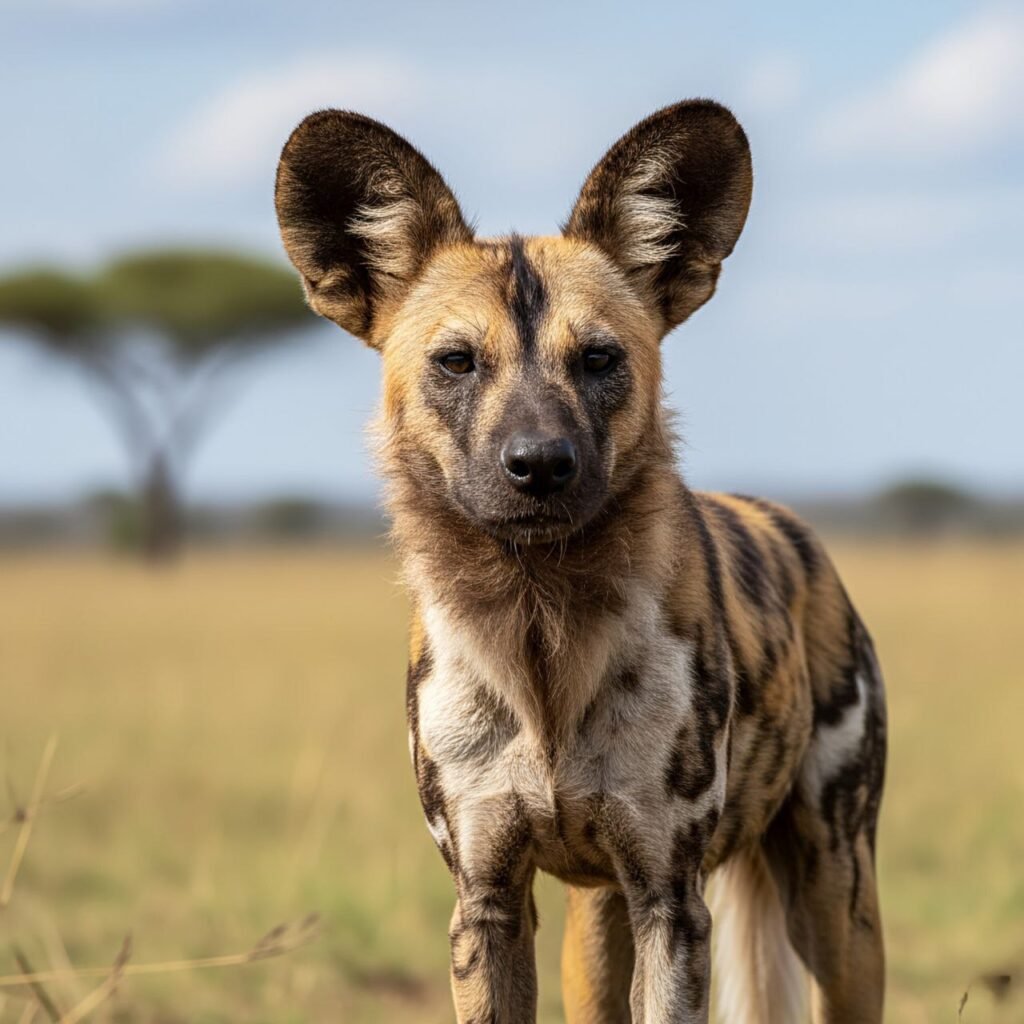
Key Features:
- Coat: Irregular patches of black, yellow, brown, and white fur give it the name “painted wolf.”
- Ears: Large, rounded ears that help in heat dissipation and communication.
- Tail: Bushy tail, often tipped in white—used as a visual signal.
- Limbs: Long legs built for stamina and speed, making it one of the best long-distance runners in the animal kingdom.
Each individual has a unique coat pattern, much like a fingerprint, which helps researchers identify individuals in the wild.
Also read: Meet the Australian Cattle Dog Built for the Wild and Loyal to the Bone.
Range and Habitat
African wild dogs are native to sub-Saharan Africa, with major populations in:
- Botswana
- Zimbabwe
- Namibia
- Tanzania
- Mozambique
- South Africa
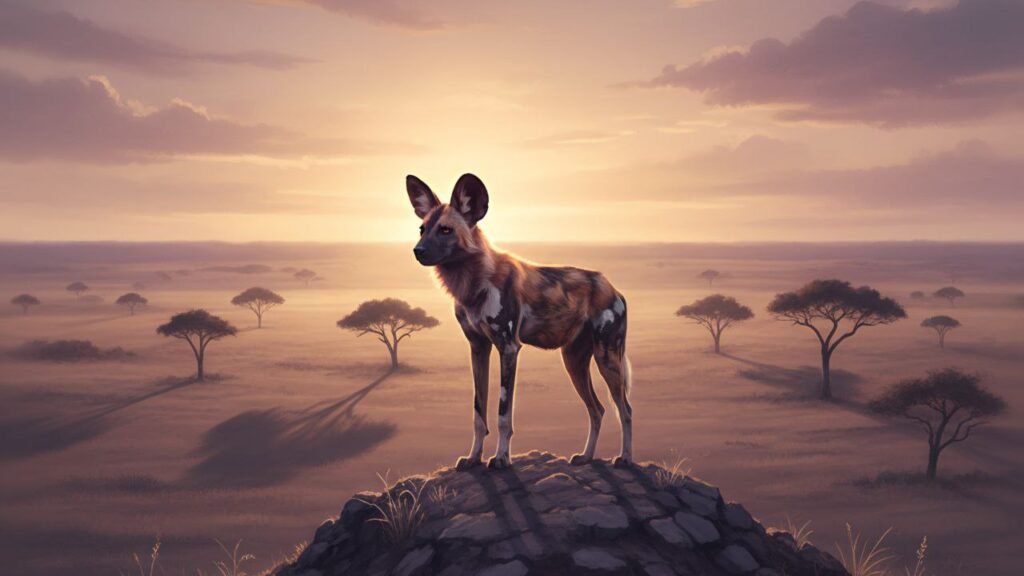
Preferred Habitats:
- Open plains
- Savannahs
- Sparse woodlands
- Semi-desert areas
They tend to avoid dense forests and human-dominated landscapes, which contributes to their decreasing range due to habitat loss.
Social Structure and Behavior
One of the most striking aspects of African wild dogs is their complex and cooperative social system.
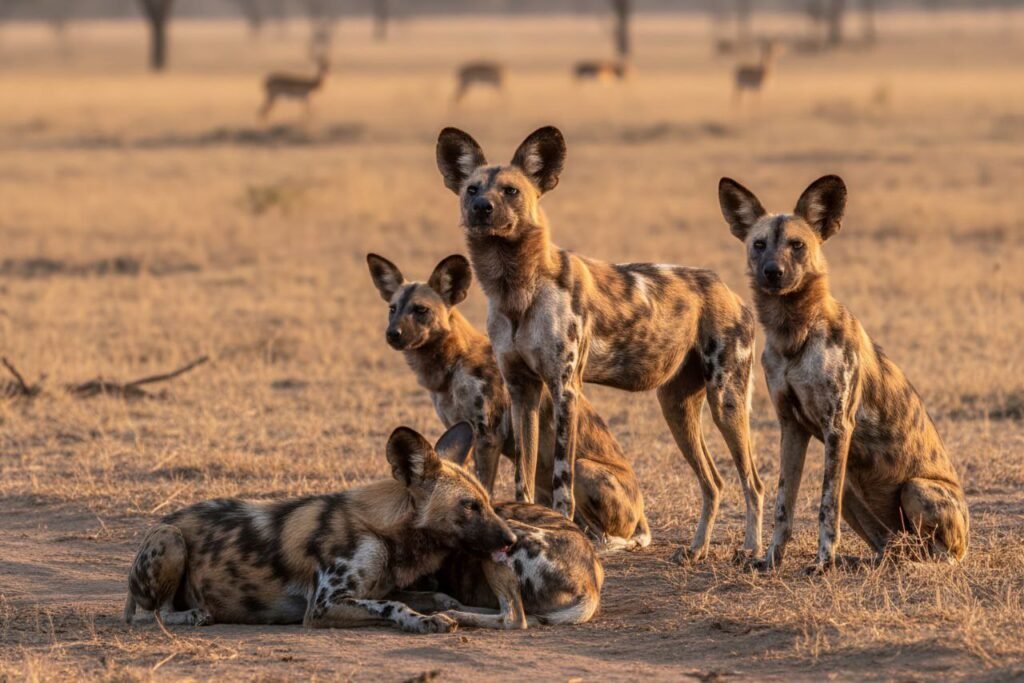
Pack Life:
- Packs typically consist of 2 to 27 individuals, though numbers can vary.
- There is usually a dominant alpha pair that are the only breeders in the group.
- Packs are highly cohesive and cooperative, with strong bonds between members.
Hunting Strategy:
African wild dogs are among the most successful hunters in Africa, with a hunting success rate of 60–90%, much higher than lions or hyenas.
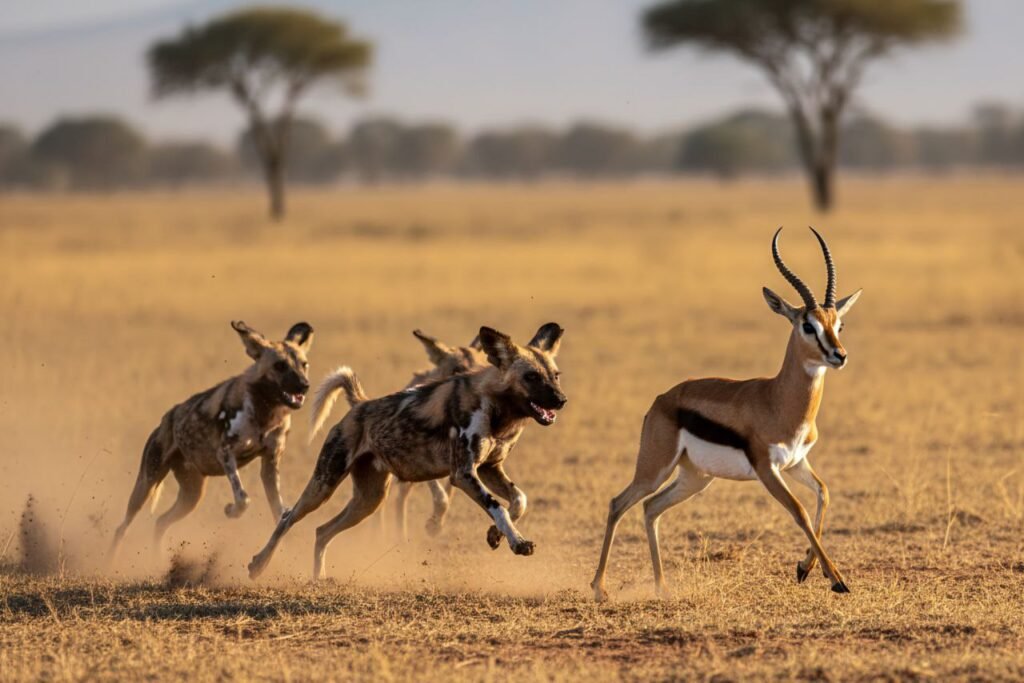
- They rely on stamina and teamwork rather than stealth.
- Prey includes impala, gazelles, warthogs, and young wildebeest.
- Once prey is caught, it is quickly torn apart and shared communally, with pups and injured members given priority.
Communication
Communication within the pack is sophisticated and includes:
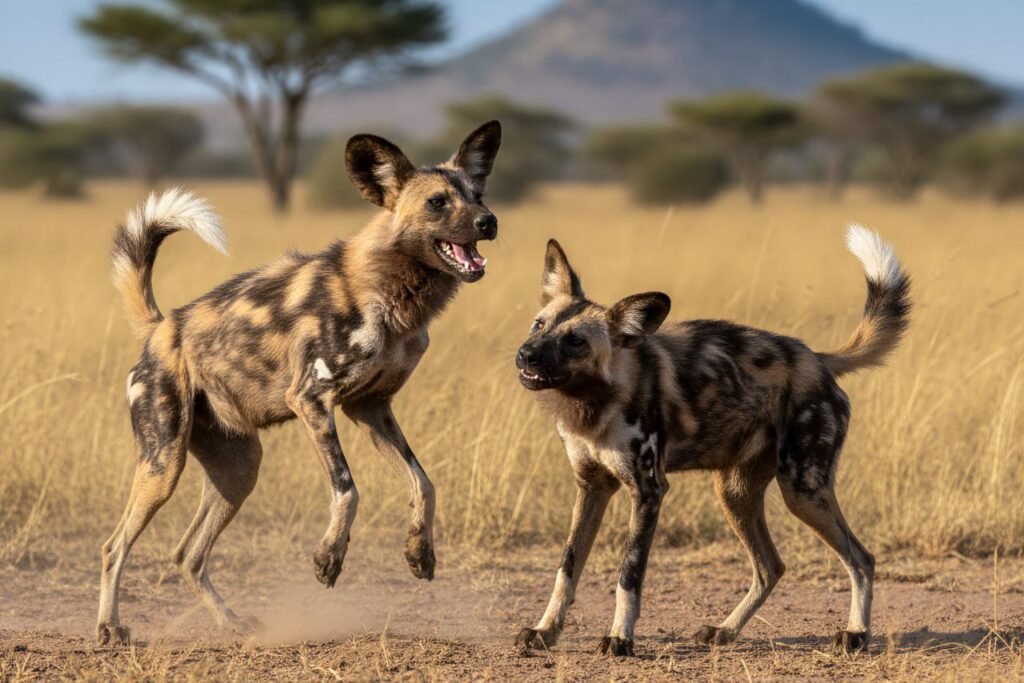
- Vocalizations: High-pitched chirps, squeaks, and twittering sounds.
- Scent marking: Used to define territory.
- Visual signals: Tail movements and body posture.
- Regurgitation: Adults regurgitate food to feed pups and other adults.
Reproduction and Lifecycle
Only the alpha pair breeds, usually once a year. After a gestation period of about 70 days, the female gives birth to 6–16 pups, one of the largest litters among carnivores.
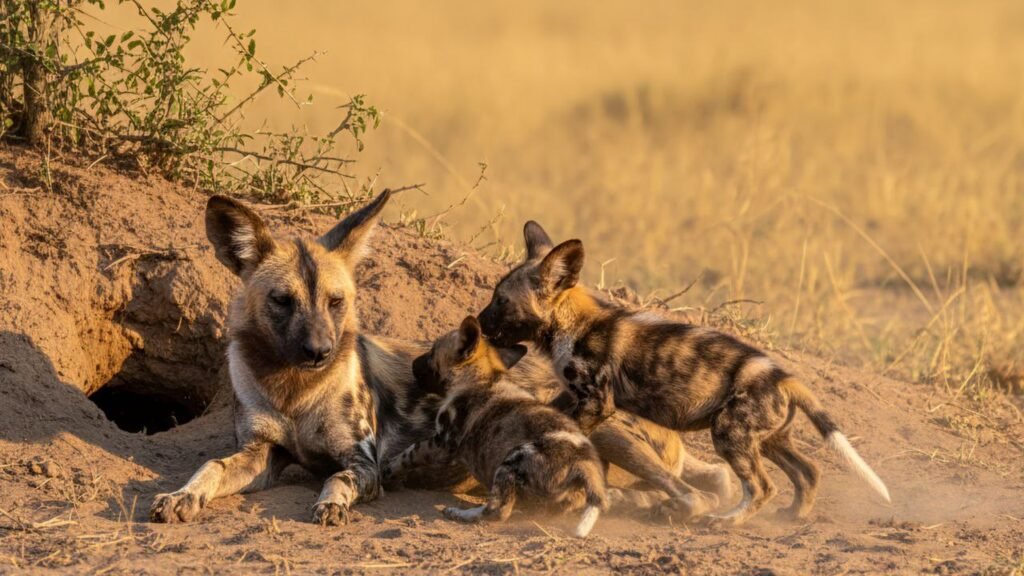
Pup Rearing:
- Pups are born in a den and are completely dependent for the first 2–3 months.
- All pack members help feed and protect them.
- By 3 months, they start joining the pack on hunting trips.
Threats and Conservation
Despite their remarkable adaptations, African wild dogs face numerous threats:
Major Threats:
- Habitat fragmentation and loss
- Human-wildlife conflict (e.g., livestock predation)
- Road kills and snaring
- Infectious diseases like rabies and canine distemper from domestic dogs
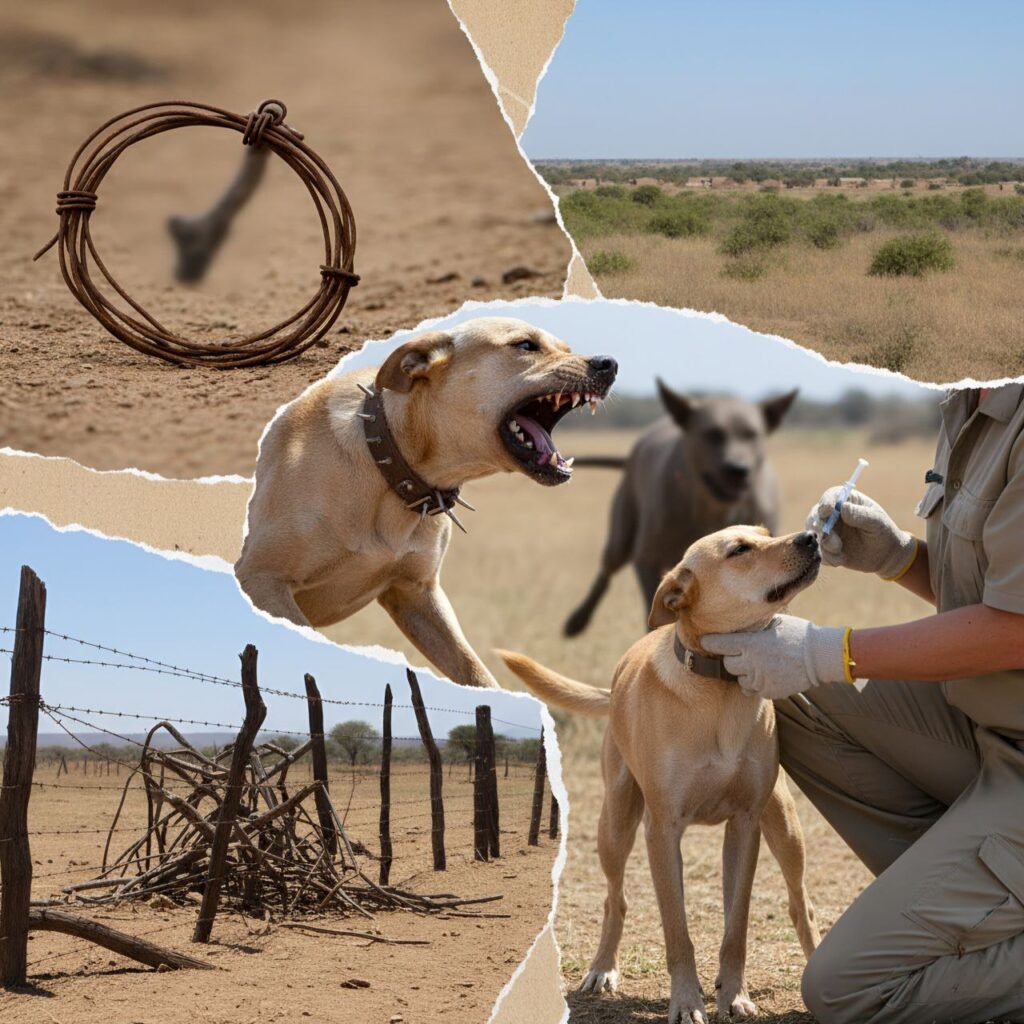
Conservation Efforts:
- Protected areas and cross-border conservation zones (e.g., the Kavango-Zambezi Transfrontier Conservation Area)
- Vaccination programs for domestic dogs
- Research and monitoring using GPS collars
- Community-based conservation and ecotourism initiatives
Importance in the Ecosystem
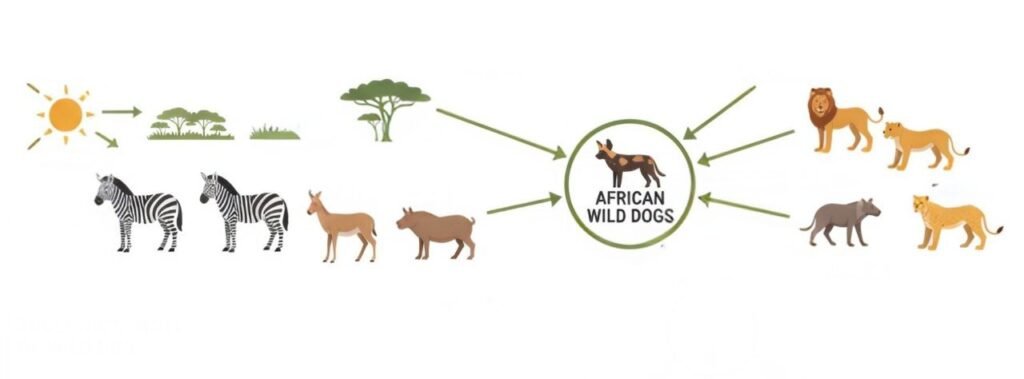
African wild dogs play a vital role in maintaining the balance of prey populations and healthy ecosystems. Their cooperative behavior and social complexity also make them a subject of great interest in behavioral ecology and conservation biology.
Savanna — a mixed woodland‑grassland biome characterized by widely spaced trees and continuous grass cover.
The African wild dog is not just another predator on the African plains—it is a symbol of wildness, cooperation, and ecological balance. With its unique appearance, social sophistication, and critical role in its habitat, it deserves greater attention and protection. Through dedicated conservation efforts and increased public awareness, there is hope for ensuring a future for these painted wolves in the wild.

